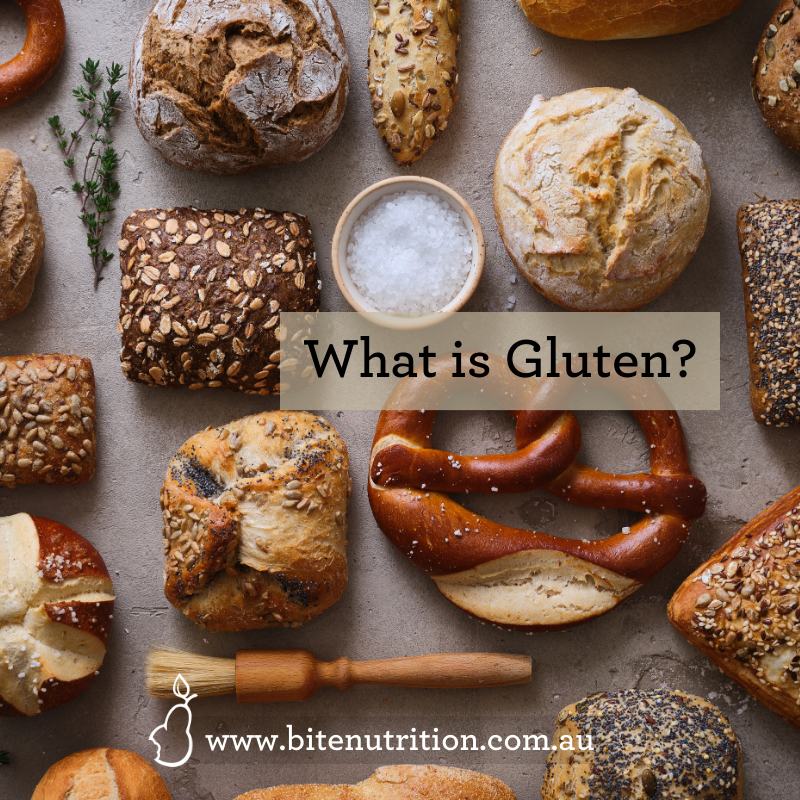What is Gluten?

Wheat and Gluten
Wheat, the primary source of gluten in our diets globally, is the most important basic food for over 36% of the world population. Wheat accounts for about 55% of global carbs and 20% of global dietary calories. It outnumbers every other grain crop in terms of acreage and production (including rice, maize, and so on) and is thus the world's most important cereal grain crop. It also happens to be the main source of gluten in our western diets and when it’s such an important part of our food supply, excluding it can be tricky.
More than $15.5 billion was spent on retail sales of gluten-free foods in 2016, which is more than double the amount spent in 2011 and we would assume this number to be even greater today. Considering the food market share around gluten free products has been slowly increasing, along with the marketing efforts presenting gluten free diets being a healthier diet preference to adopt, we as consumers really have limited understanding of what Gluten is.
Food marketing plays and profits from our ignorance, which has been repeated with history over and over again. We say it is, so it must be so.
Really? Are you profiting from this story?
Exclude with Caution
As a dietitian, I have always focused on making life as easy as possible, with dietary exclusion of any form limited to clinical requirements. Have a clinical diagnosis? (not self-diagnosis) then exclusion is warranted, if that is the standard clinical management. However, again as a Dietitian, the advice we always provide is ensuring we have a varied diet that is as close to nature as possible, and this would never include eating bread for every meal or rely on wheat as a primary carbohydrate source, particularly when you live in a developed country and have a choice. There are so many other complex carbohydrates available to you.
What Is Gluten?
Gluten is a prolamin, which are plant storage proteins high in proline amine acid content. Proteins are made of amino acids which are the building blocks of life, with some more essential than others to get through the diet. For a refresher on Proteins, see our Proteins blog.
Gluten sources most studied are those that cause immunotoxicity. Immunotoxicity is the ability of a substance to impair immune response, leading to immunity system suppression or causing unnecessary tissue damage (such as in the cases of hypersensitivity, autoimmunity or chronic inflammation). The gluten sources that can induce immune responses are outlined below; wheat, rye, barley and oat grains. However, in theory, prolamins are also in corn, rice and maize grains.
How is Gluten Helpful in Food and Cooking?
Prolamins contribute to the cohesiveness (stickiness) and extensibility (stretch) of the gluten, whereas glutelin’s play a role in the maintenance of the elasticity and strength of the gluten.
In foods, gluten has a variety of functional culinary benefits. In bread, for instance, once water is added and the flour is worked, gluten proteins form an elastic network that stretches and traps gas, allowing the bread to rise and retain moisture.
Because of these unique physical properties, gluten is also frequently added to processed foods to improve texture and promote moisture retention. It is interesting to read your common bread product ingredient lists to see if gluten has been added to it, in addition to the flour used etc.
Unfortunately for those with clinical health requirements to exclude gluten, its beneficial properties in food manufacturing means its added to so many food products, so in our world of modern packaged store-bought pre-made foods, it is difficult to avoid.
Eating Gluten and Immune Conditions
Wheat gluten is comprised of two plant protein subgroups:
- gliadin, which is high in amino acids proline and glutamine. This is the protein most researched for coeliac disease
- glutenin’s, which are fibrous and rich in the amino acid cysteine
High proline residue rich proteins such as gliadin in wheat, are harder to fully break down into smaller parts, otherwise known as “hydrolyze” and indigested fragments of gliadin (peptides, polypeptides or peptide chains) cross our intestinal walls and trigger an immune response. This damage occurs in the small intestine.
Wheat is the highest concentration of gluten or prolamins, but rye, barley and even oats, contain prolamins that also cause an immune reaction in people with coeliac disease.
Grains Containing Prolamins that are triggering:- Wheat: Contains gliadins and glutenins as its prolamins.
- Rye: Secalin prolamin.
- Barley: Hordein prolamin.
- Oats: Avenin prolamin- some can tolerate oat prolamins
- Grains that contain prolamins that are not triggering:
- Corn: Zein prolamin
- Sorghum: Kafirin prolamin
- Rice: Orzein prolamin
Conditions where excluding Gluten is a must
For the majority this is manageable with no uncomfortable side effects. But for the small minority such as those with the following diagnosis, gluten can be detrimental or cause discomfort. Gluten related conditions are below, in categories.
Autoimmune
- Coeliac Disease
- People with coeliac disease must eliminate gluten from their diets to avoid harmful reactions. A Gluten Free Diet is a must. Coeliac Disease is a disease impacting about 1% of the western population or 1 in 100 people.
- Dermatitis herpetiformis
- A skin condition that causes itchy bumpy rashes and is a sign of coeliac disease
- Gluten Ataxia
- A newly defined autoimmune condition where gluten induces antibodies that then attack your cerebellum, which causes ataxia, which is a loss of coordination and control.
Immune mediated
- Non-Coeliac Gluten Sensitivity (Gluten Intolerance)
- Some individuals experience adverse symptoms related to gluten without having celiac disease or its side effects.
Allergic
- Wheat Allergy
- Those with a wheat allergy should also avoid gluten-containing foods. This has been estimated to effect around 1 in 1000 people.
Our Second Article on gluten covers why removing gluten from the diet can be harmful without a clinically diagnosed need for it.
Sign up to our newsletter to keep in the know.

